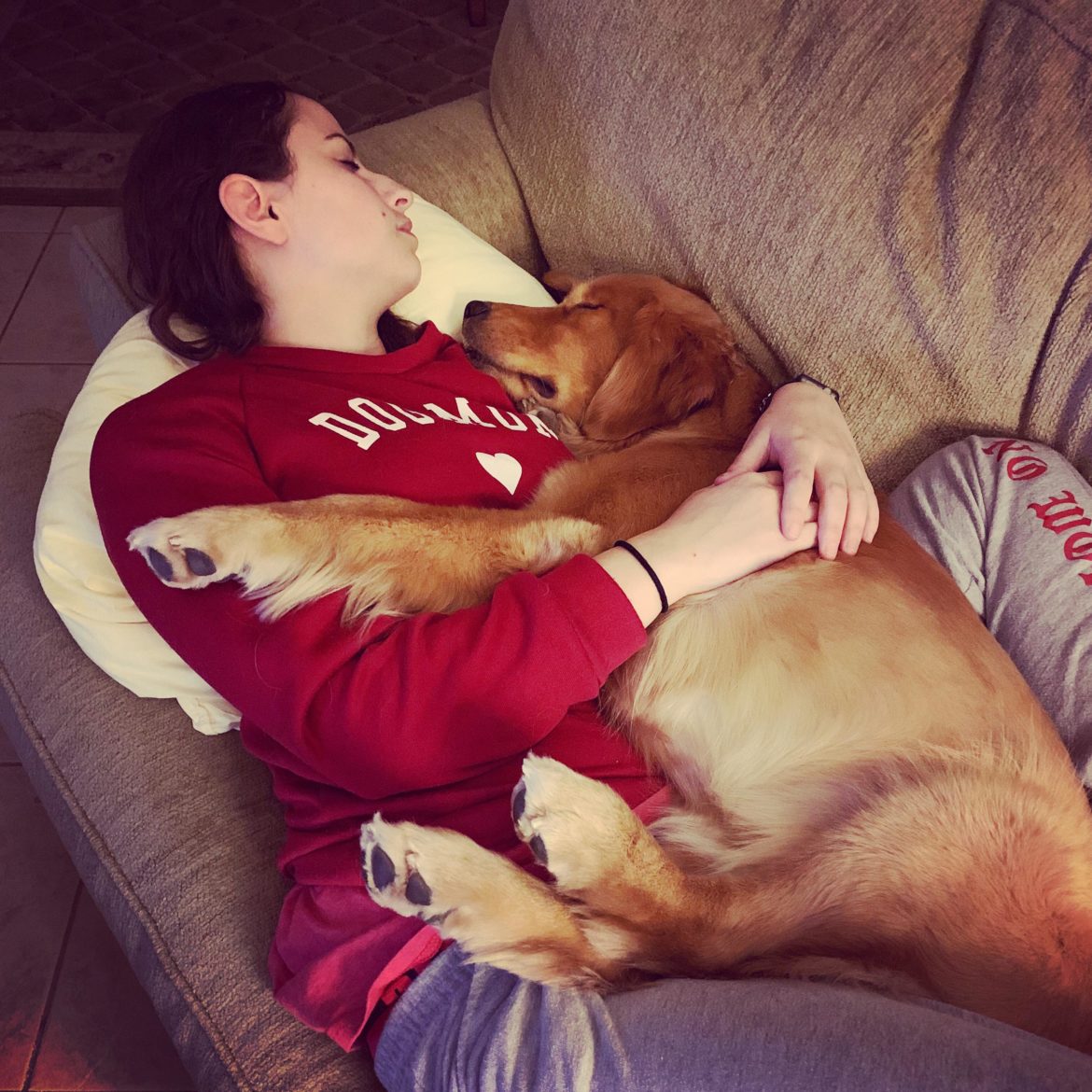Training Tips: When You’re Low On Energy
BEING VERY LOW ON ENERGY IS AN ALL TOO COMMON OCCURRENCE WHEN YOU LIVE WITH CHRONIC PHYSICAL AND MENTAL ILLNESS – HERE ARE SOME TIPS FOR HOW TO GET THAT ESSENTIAL TRAINING DONE WITH YOUR DOG DESPITE YOUR SYMPTOMS
Author: Dory Adelie
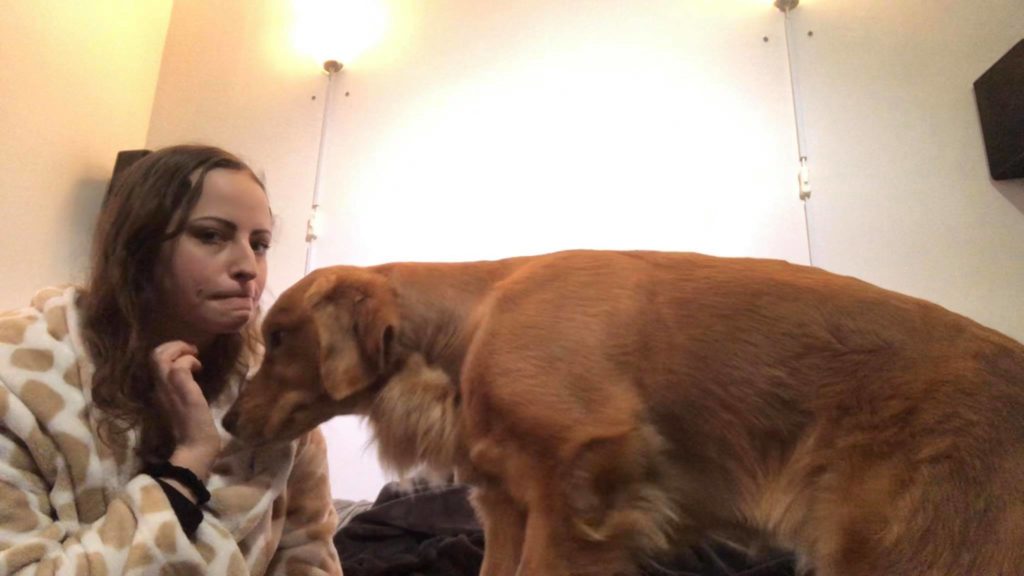
In most situations when you have a dog, you don’t urgently need to train them each day or even each week (unless you have a young puppy). You might only take them to a class every so often, or just do a little bit of informal training when you get the chance….so when you are exhausted, you can just let it pass, without even a second thought.
But when you have an Assistance Dog that you are training yourself [called “owner training”], you can’t afford to take long breaks without it severely impacting your progress. Often you are training every day in some shape or form, sometimes multiple times a day in different settings. And yet people with Assistance Dogs, and Assistance Dogs in training, are often afflicted with extreme fatigue, exhaustion, pain, low mood and other symptoms that tend to come with having chronic mental and physical illnesses. Some days or times are worse than others, potentially leaving you with pretty much no energy to do anything at all (referred to as being “out of spoons”, as per the metaphor of Spoon Theory).
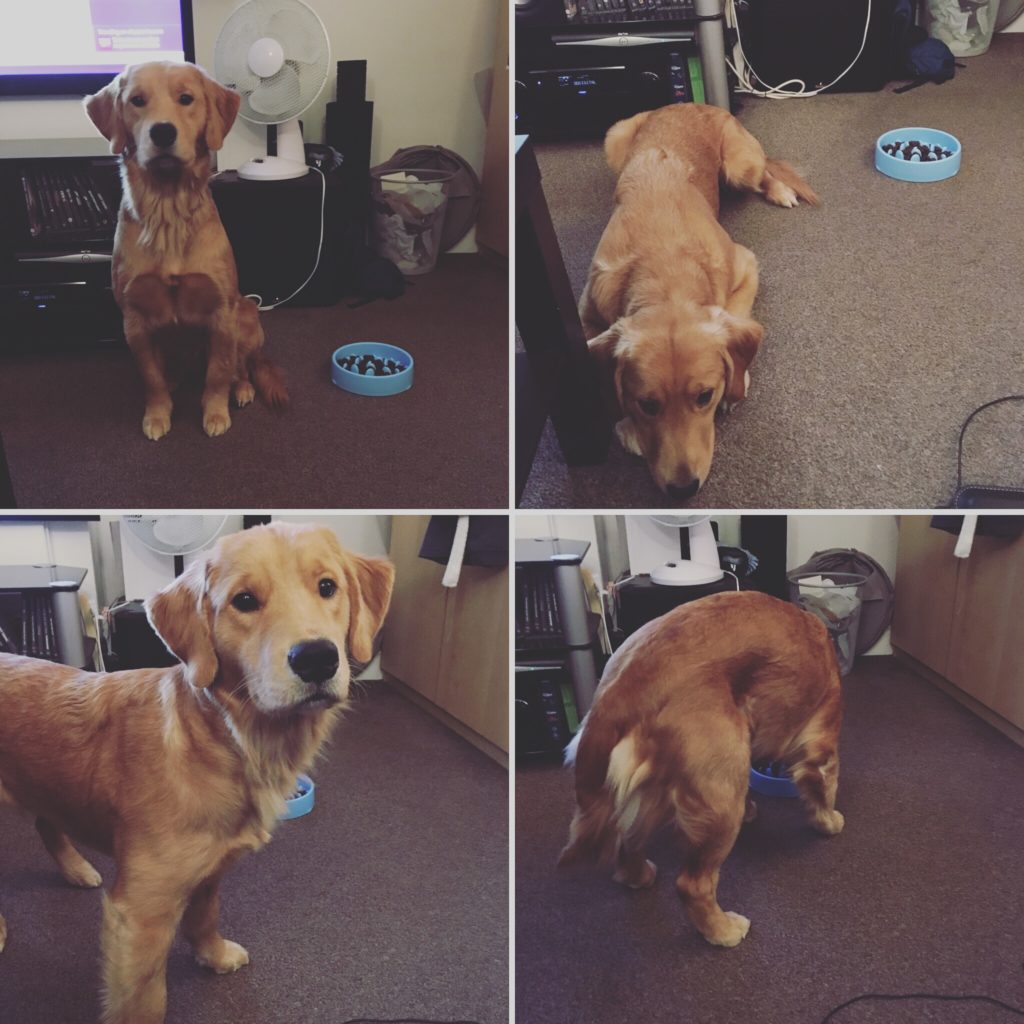
So we have put together a brief list of some tips for getting at least some training done with your dog even when you’re low on, or out of, spoons. Quick tip: we recommend having a treat bag or toys on you wherever you are (e.g. on the sofa or in bed) so that you can suitably reward and keep it a positive, motivational training experience. Alternatively you can train using their meal as a way of making sure you are training daily, or at least regularly.
IDEAS
- Practise their response to just verbal commands or just hand signals – this way you can tailor it to your symptoms and what works best for you at that moment (whether it be avoiding speaking, or avoiding moving).
- Practise retrievals and distance tasks – this is a great time to use and practise that taskwork (item retrievals, closing doors etc.) if they are at that stage. It keeps them from being too much in your space – great if you’re in a lot of pain, and keeps their brain ticking as well.
- Practise giving commands with your dog at a distance from you, while you sit/lay down – this is good to do at any level as it builds your dog’s confidence and independence. You can practise anything from sit, stand, down etc. to tricks like spin, bow, place etc.
- Give them an item to hold and see if you can beat your times with how long they can hold it. Or give them an item to hold briefly and require that they give it to your hand rather than drop it, if that’s a challenge.
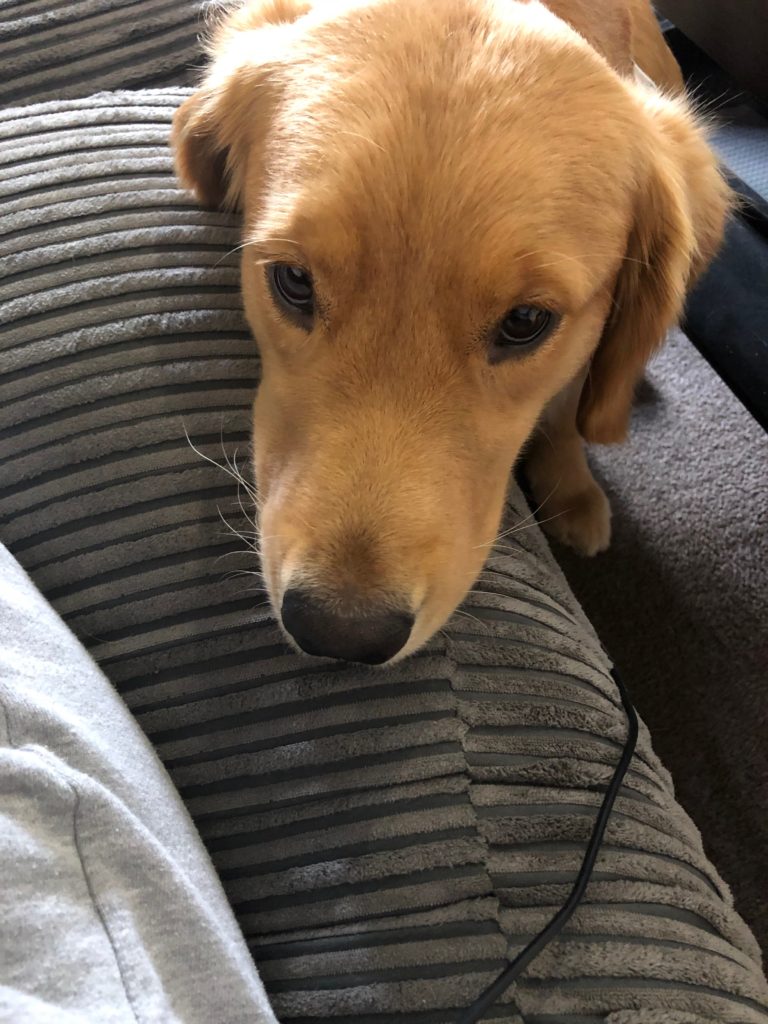
- Low movement interactions involving targeting like “touch” (nose to your palm) and “chin” (head on your leg or the bed or sofa) can be good to practise while you’re lying down.
- Getting your dog to navigate their surroundings on command can be great mental and physical exercise for them e.g. a sequence of “up up” (up onto a surface), “lay down”, “stand”, “off”, “lay down”, “stand”, “back”, “in your place”. It requires listening, thinking and coordination which can actually tire your dog out.
- If you feel able, even regular “pet dog” play is still a good way to exercise and challenge your dog e.g. fetch or tug (just with you lying in bed/on the sofa/floor).
- If you do have a burst of energy and feel able to (or get someone else to), try hiding treats and then getting them to sniff out and find them – this is tiring for your dog and great practise for them using their most valuable senses.
- If nothing else (if it is beneficial to you), you can practise your dog doing Deep Pressure (or Light Pressure) Therapy, lying on/with you (see the cover photo of this post).
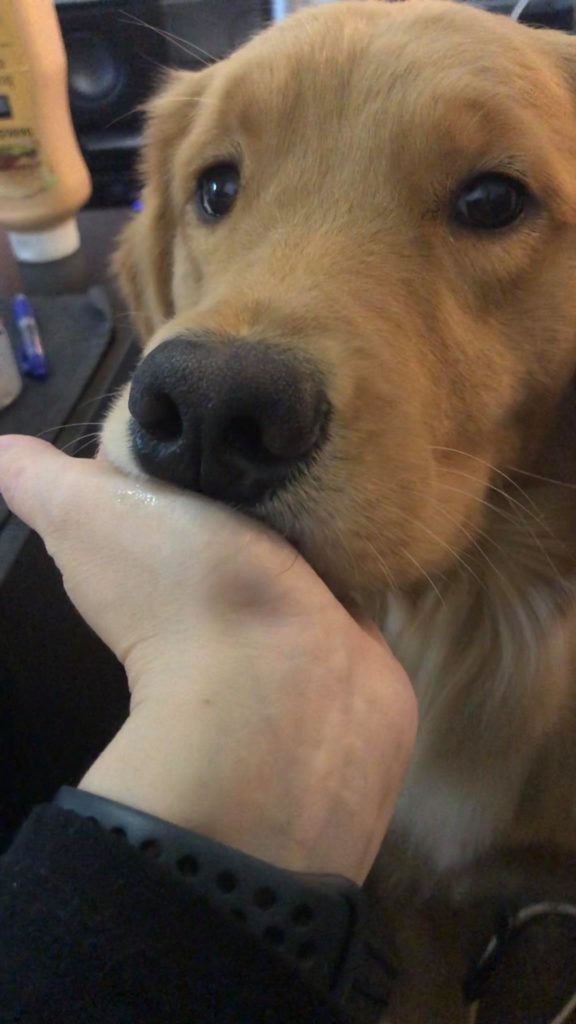
Hopefully there is something in there for you that you can turn to when you next are super low on energy or spoons, or in a symptom flare, to help you get through till you feel more able to do more interactive training. Remember, a short amount of seemingly basic or repetitive training is still better than nothing. But don’t give yourself a hard time if you miss a day – beating yourself up about it won’t help. If even these tips above are still too much to manage, or if it is a constant challenge then do consider getting a trainer to help you. There is no shame in asking for help – just think of it as doing something in your dog’s best interests.


